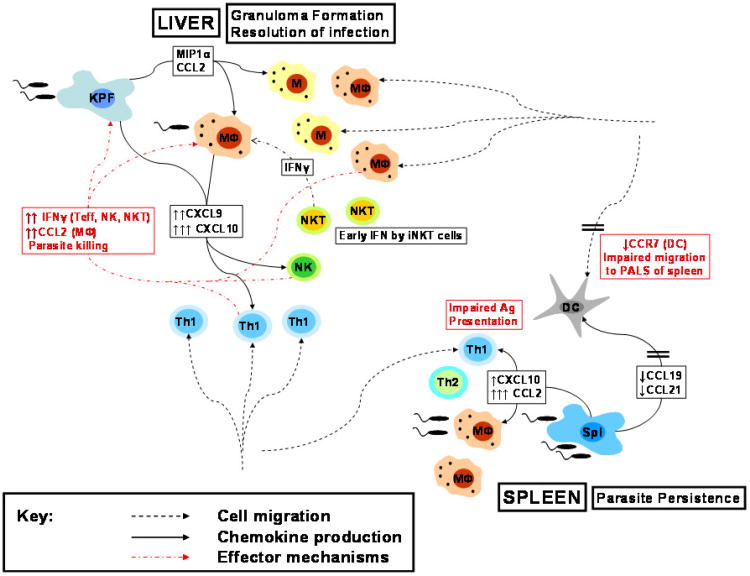Figure 2.
Major chemokine mediated events occurring in the spleen and liver during visceral leishmaniasis. Production of CCL2 and CXCL10 followed by accumulation of macrophages and Th1 cells in the infected liver results in formation of granulomas and eventual resolution of infection. In contrast, impaired chemokine driven cellular encounters between DCs and T cells due to down-regulation of CCL19, CCL21 and CCR7, coupled with a lack of persistent production of CXCL10 results in parasite persistence in the spleen.

